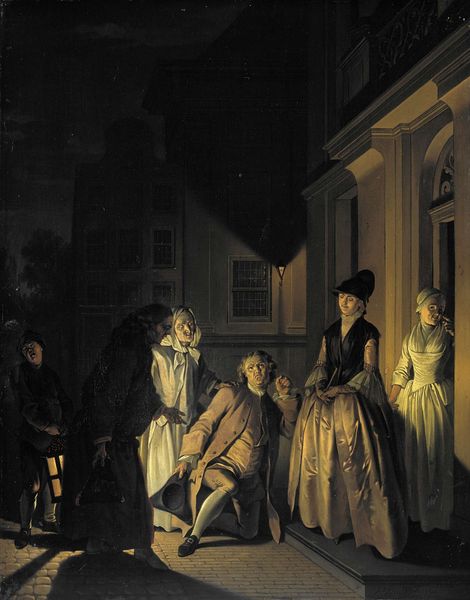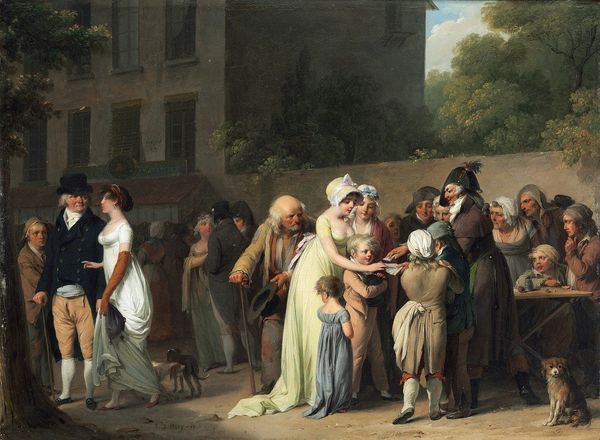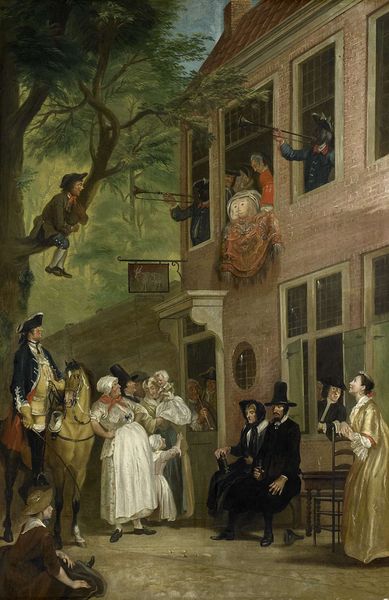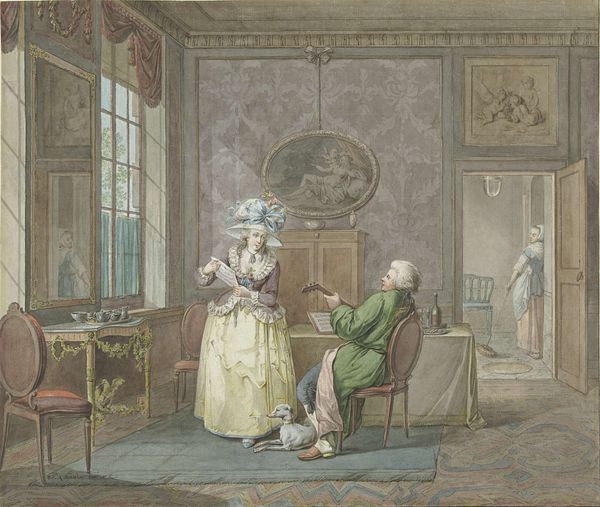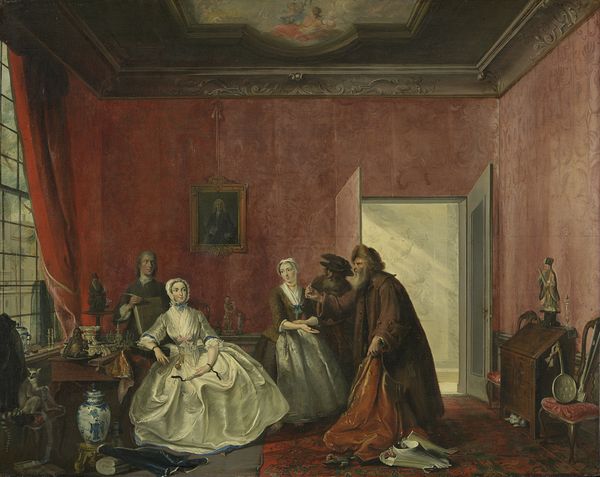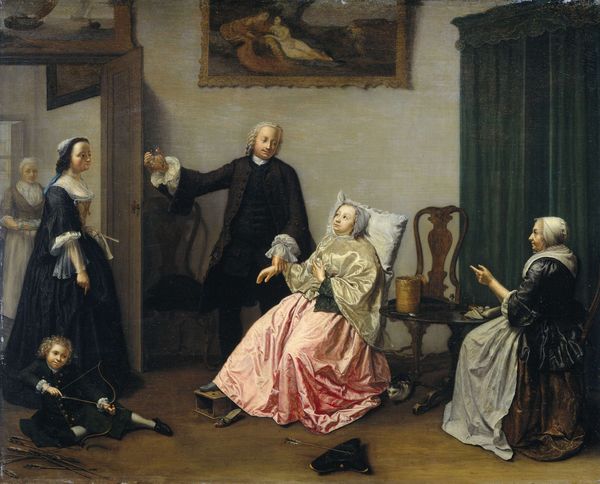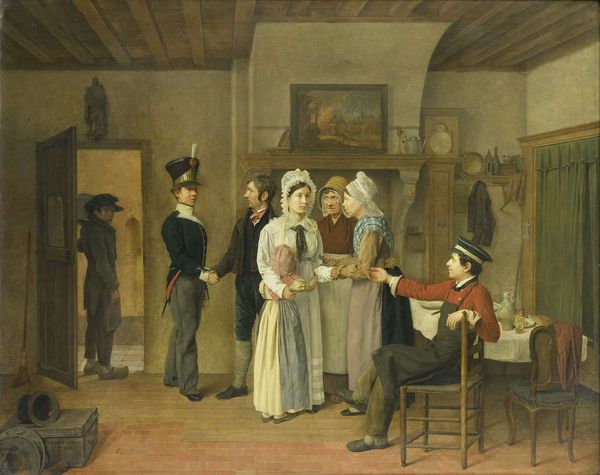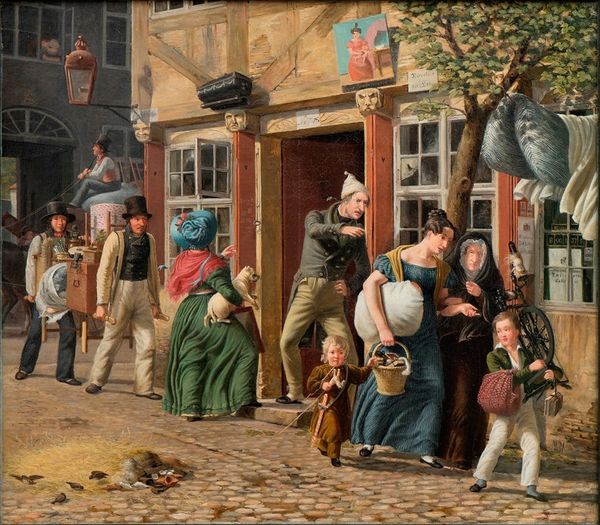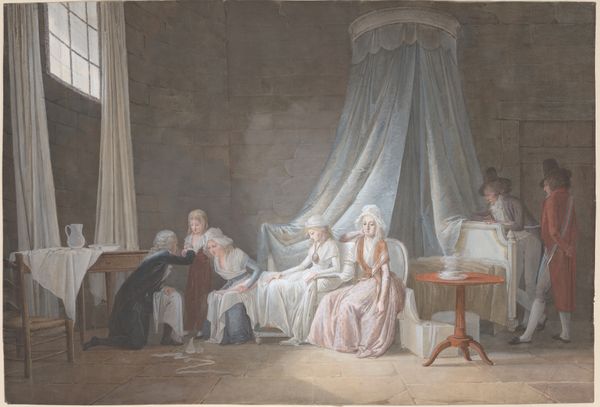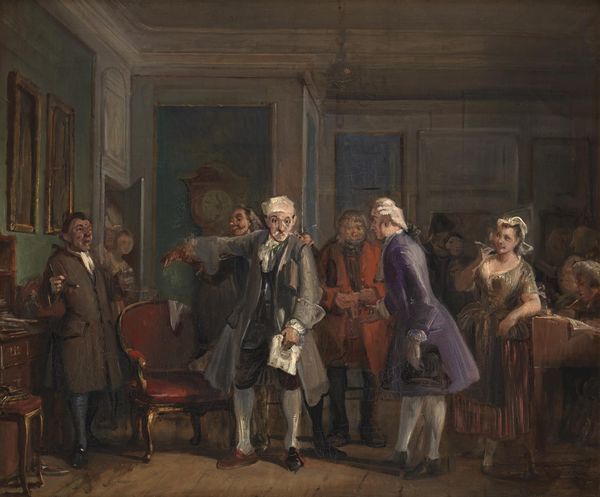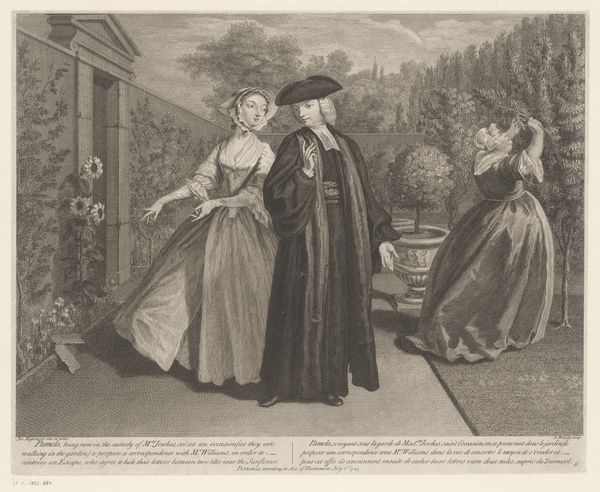
'De geveinsde droefheid': eerste bedrijf, elfde toneel van het blijspel 'De ontdekte schijndeugd' van David Lingelbach (1687) 1743
0:00
0:00
cornelistroost
Rijksmuseum
watercolor
#
narrative-art
#
dutch-golden-age
#
figuration
#
oil painting
#
watercolor
#
cityscape
#
genre-painting
#
watercolor
#
fine art portrait
#
rococo
Dimensions: height 66 cm, width 53.5 cm
Copyright: Rijks Museum: Open Domain
Cornelis Troost created this pastel drawing, depicting a scene from David Lingelbach's play, sometime in the first half of the 18th century. Troost employed delicate strokes of dry pigment to build up the image on paper. Pastel is a direct medium, allowing for immediacy of expression, yet it also demands control, as errors are difficult to correct. The artist carefully blended hues to create subtle gradations of light and shadow, capturing the textures of fabric and the expressions on the characters' faces. Pastel was a favored medium for portraiture and genre scenes during the Rococo period, prized for its soft, luminous quality and ability to capture fleeting moments with elegance and grace. Though seemingly effortless, pastel requires considerable skill and practice to master, elevating it from a mere craft to a refined art form. When we consider the making alongside the imagery, the theme of the work - feigned emotion – resonates all the more strongly. Like the actress on stage, Troost employs technique to create a believable illusion.
Comments
No comments
Be the first to comment and join the conversation on the ultimate creative platform.
